Shed Light On Your Air and GHG Calculations
Locus’ Air Quality app is designed to integrate with data sources to seamlessly calculate air emissions monthly or annually.
Locus’ Air Quality app is designed to integrate with data sources to seamlessly calculate air emissions monthly or annually.
MOUNTAIN VIEW, Calif., 29 November 2022 — Locus Technologies (Locus) is pleased to announce that The Port of Seattle (Port) has selected Locus’ multitenant Software as a Service (SaaS) for its Environmental Permit Compliance Tracking software. The Port of Seattle is a government agency overseeing the seaport and airport of Seattle. Their portfolio ranges from parks and waterfront real estate to one of the largest airports and container terminals on the West Coast. With Locus’ software, the Port of Seattle’s Maritime Environment & Sustainability department will track and manage compliance with their many permits associated with ongoing Maritime operations. This win represents additional work under Locus’ existing 10-year contract with the Port.
Locus’ SaaS will replace existing systems, which no longer meet the Port’s requirements. The Port will use Locus’ configurable compliance features to track, notify, and manage thousands of regulatory commitments for the Port and its facilities. Locus software provides a unified system for environmental data management and compliance and allows the flexibility to adapt to regulatory changes over the course of the contract.
“We are very pleased that Port of Seattle after selecting Locus earlier this year, recognized the power and flexibility of Locus and extended the use of Locus to include Permit Compliance. The Port selected Locus software because it meets a wide set of robust permit tracking and notification requirements for their active Maritime operations. The Port will streamline tracking of environmental compliance obligations using Locus’ SaaS with a configuration suited to their business processes,” said Neno Duplan, CEO of Locus.
Today is GIS Day, a day started in 1999 to showcase the many uses of geographical information systems (GIS). Earlier Locus blog posts have explained how GIS and maps support visualization of objects in space and over time. This post covers a specific visualization method called data dashboards.
A data dashboard is a combination of charts, maps, text, and images that enables analysis of data and thereby promotes discovery of previously unknown relationships in the data. Companies and organizations use dashboards to develop insight into the overall status of a company or of a company division, process, or product line. Dashboards are also a common function in ‘business intelligence’ applications such as Microsoft Power BI and Tableau. A printed dashboard is static, but an online dashboard can be dynamic; in a dynamic dashboard, interacting with one item on the dashboard causes the other items to update. Taken together, the visualizations on a dynamic dashboard can help you find the story in your data.
One reason dashboards are so helpful is that they allow humans to partially ‘offload’ their thinking. Cognitive research has shown that human ‘working memory’ handles at most four items at a time. A good visualization, however, reduces the number of items to process in memory.
Consider a large table of carbon dioxide emissions by country for multiple years; it can be difficult to keep all the numbers in mind if you are trying to find trends.

If you plot the data in a graph, however, each series of data in the chart becomes just one line on the graph. It is much easier to compare lines on the chart than to compare columns of numbers.

Now consider making a map with countries color coded by emissions. Again, for each country, the map reduces multiple numbers to a single color for that country on the map. You can compare country colors more easily than columns of numbers.

A dashboard that combines multiple visualizations further enhances data analysis. Imagine a dynamic dashboard showing you both the emissions chart and map described above. If you select a country on the map, the chart can highlight the line for that country, so you compare its emissions to other countries over time. Similarly, if you select a line on the chart for a specific country, the map can highlight the selected country to show how its emissions compare to nearby countries. This interactivity lets you drill into your data more effectively than using either the chart or the map by itself.
Here are three examples of effective dashboards that are available online:
Locus includes data dashboards in our applications. One example is the Site Metrics dashboard in EIM, Locus’s cloud-based, software-as-a-service application for environmental data management. The Site Metrics dashboard lets you perform roll-up queries across your portfolio of sites. A map on the dashboard shows all states with active sites. If you select one or more states, the dashboard updates the charts and tables on the right to show total sites, user logins, and record counts. Other dashboards can support showing sample locations of certain chemicals or counts of regulatory limit exceedances.

A further example comes from the Locus Environmental Social and Governance (ESG) application. ESG metrics are becoming increasingly important measures for an organization’s performance. Data dashboards can help companies quickly visualize trends in their ESG metrics using intuitive mapping tools.

This dashboard illustrates both spatial and time trends and provides the raw data necessary for auditability and transparent decision making. Having these features on a single combined view provides users with instant access to the key inputs for ESG prioritization, planning, and project implementation.
As these examples from Locus show, data dashboards with integrated mapping are important tools for maximizing the value of your collected environmental and ESG data. For any dataset with a geographic component, it’s important to incorporate mapping elements in the outputs, to highlight trends and patterns that may not otherwise be visible in a chart or table. Modern software can combine these output formats in a way that tells the story shown by your data.
Locus GIS+ features all of the functionality you love in EIM’s classic Google Maps GIS for environmental management—integrated with the powerful cartography, interoperability, & smart-mapping features of Esri’s ArcGIS platform!
Learn more about Locus’ GIS solutions.
About the Author—Dr. Todd Pierce, Locus Technologies
Dr. Pierce manages a team of programmers tasked with development and implementation of Locus’ EIM application, which lets users manage their environmental data in the cloud using Software-as-a-Service technology. Dr. Pierce is also directly responsible for research and development of Locus’ GIS (geographic information systems) and visualization tools for mapping analytical and subsurface data. Dr. Pierce earned his GIS Professional (GISP) certification in 2010.
One of the most frequent conversations we have is with EHS professionals who approach us with struggles concerning their current software solution. They often seek out Locus out of frustration, because their current software provider focuses almost exclusively on the safety side of EHS. While there’s nothing innately wrong with focusing on one aspect of EHS, most professionals need a more robust software to meet their needs. They need a solution that can handle the environmental side of EHS.
When we ask what they’re missing, it ranges depending on their current software, and most commonly these professionals don’t have the ability to automate environmental data collection, management, and reporting. They are, for the most part, entering everything by hand and reporting to local, state, and federal agencies manually. The lack of a proper solution from their current provider means that they’re doing more work and potentially misreporting due to repeat entry errors.
EHS professionals Must focus on a wide range of issues, and a lack of versatility in their software solution means that they have to work harder to fill in the gap in their existing process and software solutions. When Locus is approached, most of the time it’s by professionals seeking relief, and they find us because we offer a tool that both meets their needs and makes their work less stressful.
The environmental side of EHS is vast, and professionals are expected handle anything from air and GHG emissions to water, waste and beyond. And while other providers offer anything from a bare bones solution to enough to get by, Locus knows that a robust solution can reduce the burden, time, and potential inaccuracies that EHS professionals face. We know because we’ve been there. Locus software is developed by and for EHS professionals. Our domain experts have had to deal with the struggles of subpar software, so that’s why we make a solution to fit the needs of our peers. That’s why our EHS software features a full suite of solutions, and a robust calculation engine.
Over the longer term, we envision a world where we can use shared environmental data to take a more concerted approach to our collective environmental stewardship. We consider the work at Locus an essential step in addressing a monumental global problem.
The conversation about the environmental landscape has evolved drastically over the last 50 years as we continue to understand how human activity has affected the planet. The 21st century’s environmental challenges are manifold as shortages of drinkable water; the impact of various pollutants that enter our atmosphere, including greenhouse gas emissions, wastewater, radioactive materials, and other hazardous materials; the strains of our ever-increasing population on limited resources, and threatened ecosystems; and climate change causing extreme weather conditions to push more and more of the population into a precarious situation.
Companies and society need a collective and holistic understanding of the problems we face. The only way to understand the whole picture and act meaningfully on a global level is for all companies to understand the impact of their activities. It’s impossible to mitigate the risks and effects of those activities on the planet when we do not have the data to characterize the problem and see a complete picture of what we face.
This whole picture will require us to monitor an unprecedented quantity of data, and with this massive data explosion, Locus’s current efforts come into play. We are working to ensure that we are prepared for this ever-increasing data tsunami by laying the groundwork with the companies and government agencies Locus works with daily. They are already tracking increased data, analyzing their activities, finding ways to operate more efficiently, producing fewer emissions and less wastewater, and improving their environmental footprints. Locus would like to see the scale of those mitigation efforts increase a thousand-fold over the next ten years and for our efforts to yield clear improvements in our collective environmental impacts.
While someday we may have environmental data sharing among all public and private organizations, the regulatory bodies that govern them, and the scientific community, which will provide us with an even more complete picture of our environmental activities, any coordinated effort is years in the making. In the meantime, Locus ensures we are ready to help tackle the problem.
This is the final post highlighting the evolution of Locus Technologies over the past 25 years. The previous post can be found here.
For many, climate change management and carbon accounting present a new opportunity, a new domain to be conquered by software. The upside looks huge, next frontier, next bubble. But it is not that simple. Instead of a single part, there is a family of domains, each with its not that simple science interwoven with many unsynchronized reporting standards and sometimes competing regulations. There are no clear regulations or other drivers to normalize the playing field. Nevertheless, ESG reporting created a hype that looks more like the medieval battle for territory.
Locus software has dominated the EHS compliance space for the last two decades. Consequently, Locus has the best shot at the ESG software market as the company has been gradually pivoting into sustainability software for some time. Locus software already manages most enterprise customers’ data in their EHS apps necessary for ESG reporting. Most importantly, Locus has the domain expertise to build software applications to match the complexity of ESG reporting and carbon accounting. In other words, Locus understands the science behind data and has used this expertise to quickly build a science-based reporting infrastructure leveraging Locus’ already strong presence in the space.
Locus’s applications are based on science and backed by data primarily from the EHS compliance for companies that disclose their information based on verified scientific data and actual readings from their instruments, lab results, resource consumption, waste generation, or water and energy management.
One of the biggest drivers of ESG software will be the convergence of climate change, water, and energy crises in the coming years. This sustainability and EHS compliance elements must coexist in a highly scalable real-time software platform that only a modern, multitenant cloud architecture offers. Locus has it.
Locus ESG software offers a SaaS platform that incorporates unified data layers that give Locus customers a consolidated view of their data across different business silos, scopes, and integrated EHS and ESG platforms.
Locus’ unified data layer brings varying data sources together to offer a single view of a company’s climate-related data. Using Locus’s shared SaaS-based applications and platforms could also give investment managers tools to evaluate their investment strategies and up-to-date opinions on their portfolio performance on ESG elements.
At Locus, we are genuinely driven by the dynamic industries we serve and the changing environmental landscape we must all work to safeguard. We help solve our customers’ complex environmental problems, improve the way environmental professionals work, and offer new ways to organize vast amounts of environmental, sustainability, and energy data on the Web. We turn environmental and energy data into actionable, real-time information. Most importantly, we help our clients lower operating costs and reduce environmental risk exposure and liability.
This is the eighth post highlighting the evolution of Locus Technologies over the past 25 years. The previous post can be found here. This series concludes with Locus at 25 Years: A Long-Term Vision for Environmental Stewardship.
Locus’s strategic focus has always been to deliver intelligent, well-designed software applications that add value to customers’ bottom lines. The success of these applications is rooted in the deep environmental domain and content experience of the Locus team, its proven data management capabilities, and its view that customers who own their data maintain a competitive advantage over those that don’t.
Locus’s perseverance developed the world’s first commercial online environmental information management, collaboration, and compliance system. Locus’ EIM revolutionized how environmental data is stored, accessed, managed, and reported— ultimately saving customers time and money and giving them the power to be “green on demand.” Locus Platform gave customers tools to consume EIM data in various applications built on top of it, communicating with each other. Locus delivered the industry’s first unified EHS compliance and ESG reporting system.
Locus SaaS has evolved to encompass more and more aspects of strategic business planning. While a critical incentive to using Locus Platform and EIM systems is regulatory compliance, Locus has taken a more comprehensive view of the mandate to improve environmental stewardship by creating plans to improve environmental performance across clients’ organizational silos; sites, and regulatory programs; emission sources to air, soil, or water; energy management; all aspects of Environmental Health and Safety (EH&S) issues, sustainability and ESG reporting, and technology platforms and mobile devices.
While most environmental software firms have focused on tracking one area of concern, such as greenhouse gases or incident management, Locus built the most comprehensive software platform for managing compliance and organizing environmental and resource data and information. Using Locus’ SaaS, customers can collect, organize, search, report, maintain, and preserve all the required documentation and data for environmental compliance and sustainability management. Locus integrates risk management, compliance, sustainability management, and water quality management under a single umbrella. Locus software integrates with other enterprise resource planning software—part of the big picture for governance, risk and compliance (GRC), risk management, compliance, and health and safety software.
Our holistic view of GRC enables transparency and connectivity across an organization – sparking the insights that most organizations need to make better decisions.
Our SaaS platform supports leading organizations by:
The resulting Locus applications, primarily EIM and Locus Platform, help companies better record, track, manage, analyze, and share information regarding water, air, energy, waste, sustainability, ESG, and EHS compliance management.
This is the sixth post highlighting the evolution of Locus Technologies over the past 25 years. The previous post can be found here. This series continues with Locus at 25 Years: Innovative Approach and Plans.
MOUNTAIN VIEW, Calif., 24 June 2022 — Locus Technologies (Locus) is pleased to announce that The Port of Seattle (Port) has selected Locus’s multitenant Software as a Service (SaaS) for its environmental data management and compliance software. The Port of Seattle is a government agency overseeing the seaport and airport of Seattle. Their portfolio ranges from parks and waterfront real estate to one of the largest airports and container terminals on the West Coast. With Locus’s software, The Port will streamline its environmental management across its properties. The term of this contract is ten (10) years with a contract value of over one million dollars.
The Port of Seattle competitively procured environmental software that will serve as the Port’s centralized system for managing environmental data and information, site investigations and permit compliance for Aviation and Maritime Port operations.
Locus’s cloud software will replace several existing systems, which no longer meet the Port’s requirements. Locus’s software combines the power of EIM’s environmental data analytical and reporting capabilities with Locus Platform’s configurable compliance features to track, notify, and manage regulatory commitments for the Port and its contractors. Locus software provides a unified system for environmental data management and compliance and allows the flexibility to adapt to regulatory changes over the course of the contract.
“We are very pleased that Port of Seattle recognized the power of our cloud software. The Port selected Locus software due to its robust environmental data management and compliance capabilities tested for nearly a quarter-century in the cloud. With Locus, the Port will have all data in a central data repository available on the web 24 hours a day, seven days a week. Port will reap the benefits of using Locus’ SaaS to manage and automate their environmental data, compliance, and reporting,” said Neno Duplan, CEO of Locus.
Locus Platform is the preeminent on-demand application development platform for EHS, ESG, and beyond, supporting many organizations and government institutions. Individual enterprises and governmental organizations trust Locus’s SaaS Platform to deliver robust, reliable, Internet-scale applications. The foundation of Locus Platform (LP) is a metadata-driven software architecture that enables multitenant applications. This unique technology, a significant differentiator between Locus and its competitors, makes the Locus Platform fast, scalable, and secure for any application. What do we mean by metadata-driven? If you look up metadata-driven development on the web, you find the following:
“The metadata-driven model for building applications allows an Enterprise to deploy multiple applications on the same hosting infrastructure easily. Since multiple applications share the same Designer and Rendering Engine, the only difference is the metadata created uniquely for each application.”
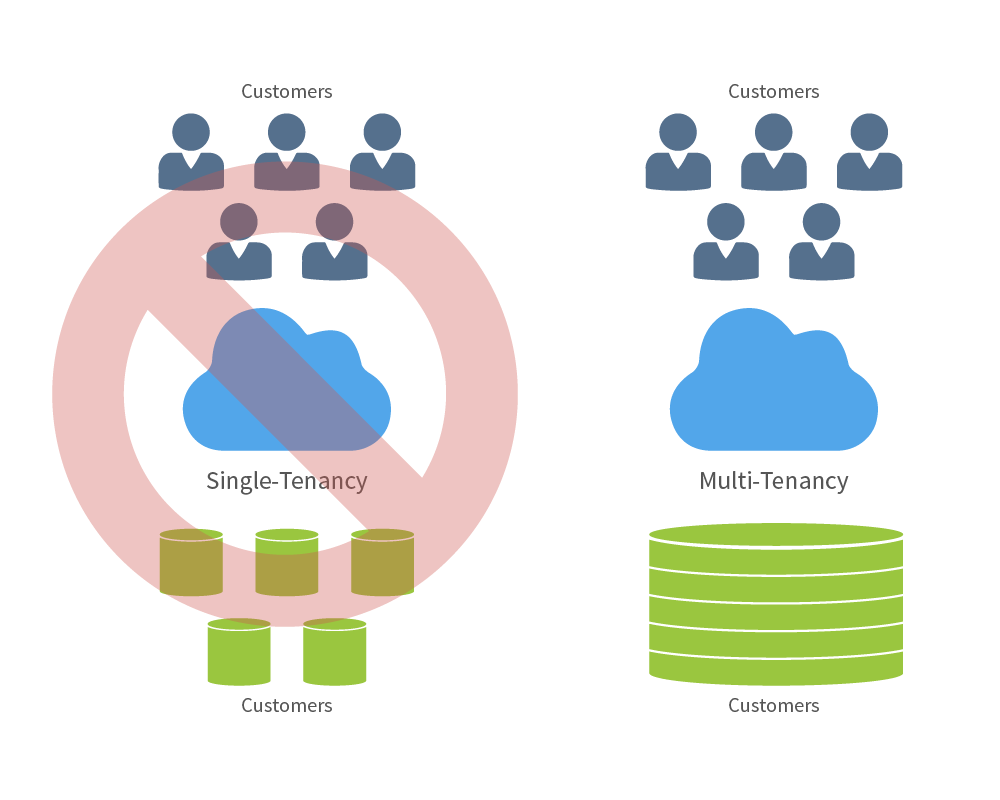
The Triumph of the Multitenant SaaS model, which Locus brings to the EHS/ESG industry.
In the case of LP, it is the Designer and Rendering Engine cited in this definition. All LP customers share this engine and use it to create their custom applications. These applications may consist of dashboards, forms to enter data, plots, reports, and so forth, all designed to meet a set of requirements. Instructions (metadata) stored in a database tell the engine how to build these entities, the total of which form a client-designed application.
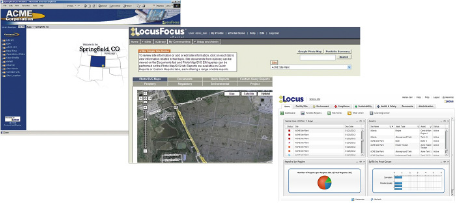
Locus Platform’s evolution to the leading EHS and ESG Platform.
History has shown that every so often, incremental advances in technology and changes in business models create significant paradigm shifts in the way software applications are designed, built, and delivered to end-users. The invention of personal computers (PCs), computer networking, and graphical user interfaces (UIs) gave rise to the adoption of client/server applications over expensive, inflexible, character-mode mainframe applications. And today, reliable broadband Internet access, service-oriented architectures (SOAs), and the cost inefficiencies of managing dedicated on-premises applications are driving a transition toward the delivery of decomposable, collected, shared, Web-based services called software as a service (SaaS).
With every paradigm shift comes a new set of technical challenges, and SaaS is no different. Existing application frameworks are not designed to address the unique needs of SaaS. This void has given rise to another new paradigm shift, namely platform as a service (PaaS). Hosted application platforms are managed environments specifically designed to meet the unique challenges of building SaaS applications and deliver them more cost-efficiently.
The focus of Locus Platform is multitenancy, a fundamental design approach that dramatically improves the manageability of EHS and ESG SaaS applications. Locus Platform is the world’s first PaaS built from scratch to take advantage of the latest software developments for building EHS, ESG, sustainability, and other applications. Locus Platform delivers turnkey multitenancy for Internet-scale applications.
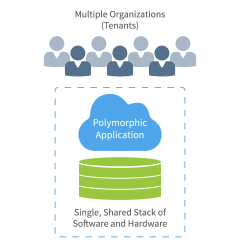
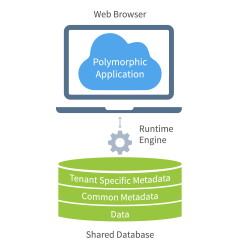
A single shared software and hardware stack across all customers.
The same applies to many different sets of users; all Locus’ LP applications are multitenant rather than single-tenant. Whereas a traditional single-tenant application requires a dedicated group of resources to fulfill the needs of just one organization, a multitenant application can satisfy the needs of multiple tenants (companies or departments within a company, etc.) using the hardware resources and staff needed to manage just a single software instance. A multitenant application cost-efficiently shares a single stack of resources to satisfy the needs of multiple organizations.
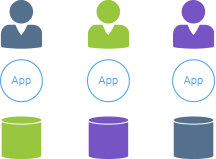
Single-tenant apps are expensive for the vendor and the customer.
Tenants using a multitenant service operate in virtual isolation: Organizations can use and customize an application as though they each have a separate instance. Yet, their data and customizations remain secure and insulated from the activity of all other tenants. The single application instance effectively morphs at runtime for any particular tenant at any given time.
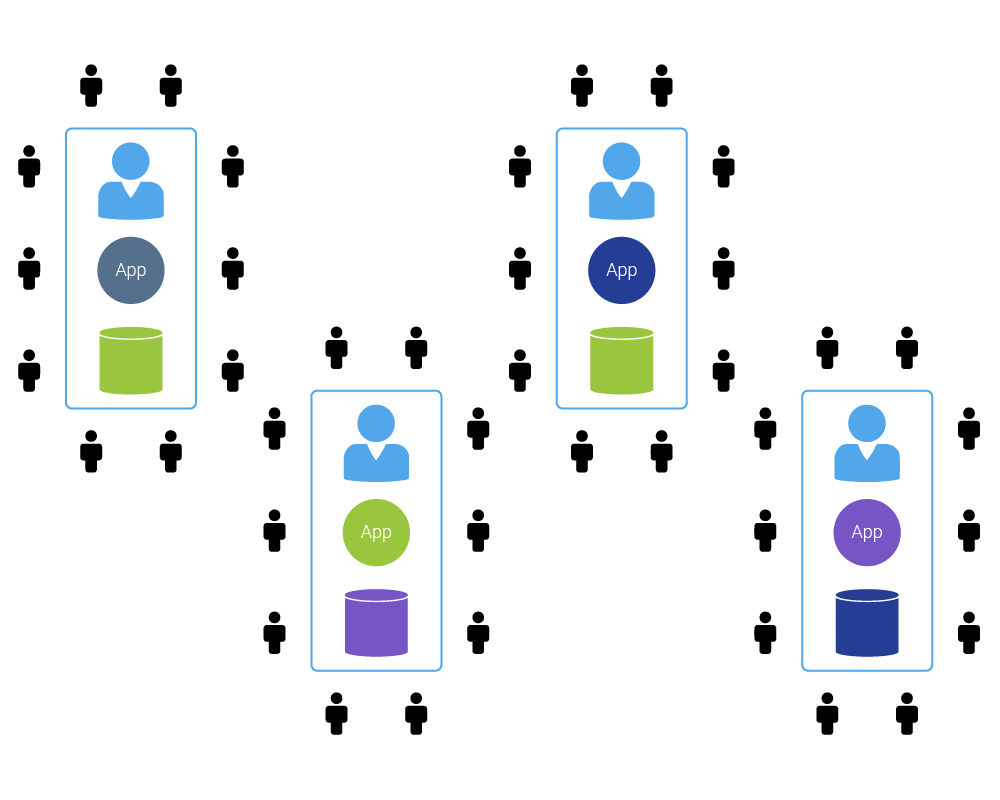
Single-tenant apps create waste
Multitenancy is an architectural approach that pays dividends to application providers (Locus) and users (Locus customers). Operating just one application instance for multiple organizations yields tremendous economy of scale for the provider. Only one set of hardware resources is necessary to meet the needs of all users, a relatively small, experienced administrative staff can efficiently manage only one stack of software and hardware, and developers can build and support a single code base on just one platform (operating system, database, etc.) rather than many. The economics afforded by multitenancy allows the application provider to, in turn, offer the service at a lower cost to customers—everyone involved wins.
Some attractive side benefits of multitenancy are improved quality, user satisfaction, and customer retention. Unlike single-tenant applications, which are isolated silos deployed outside the reach of the application provider, a multitenant application is one large community that the provider itself hosts. This design shift lets the provider gather operational information from the collective user population (which queries respond slowly, what errors happen, etc.) and make frequent, incremental improvements to the service that benefits the entire user community at once.
Two additional benefits of a multitenant platform-based approach are collaboration and integration. Because all users run all applications in one space, it is easy to allow any user of any application varied access to specific data sets. This capability simplifies the effort necessary to integrate related applications and the data they manage.
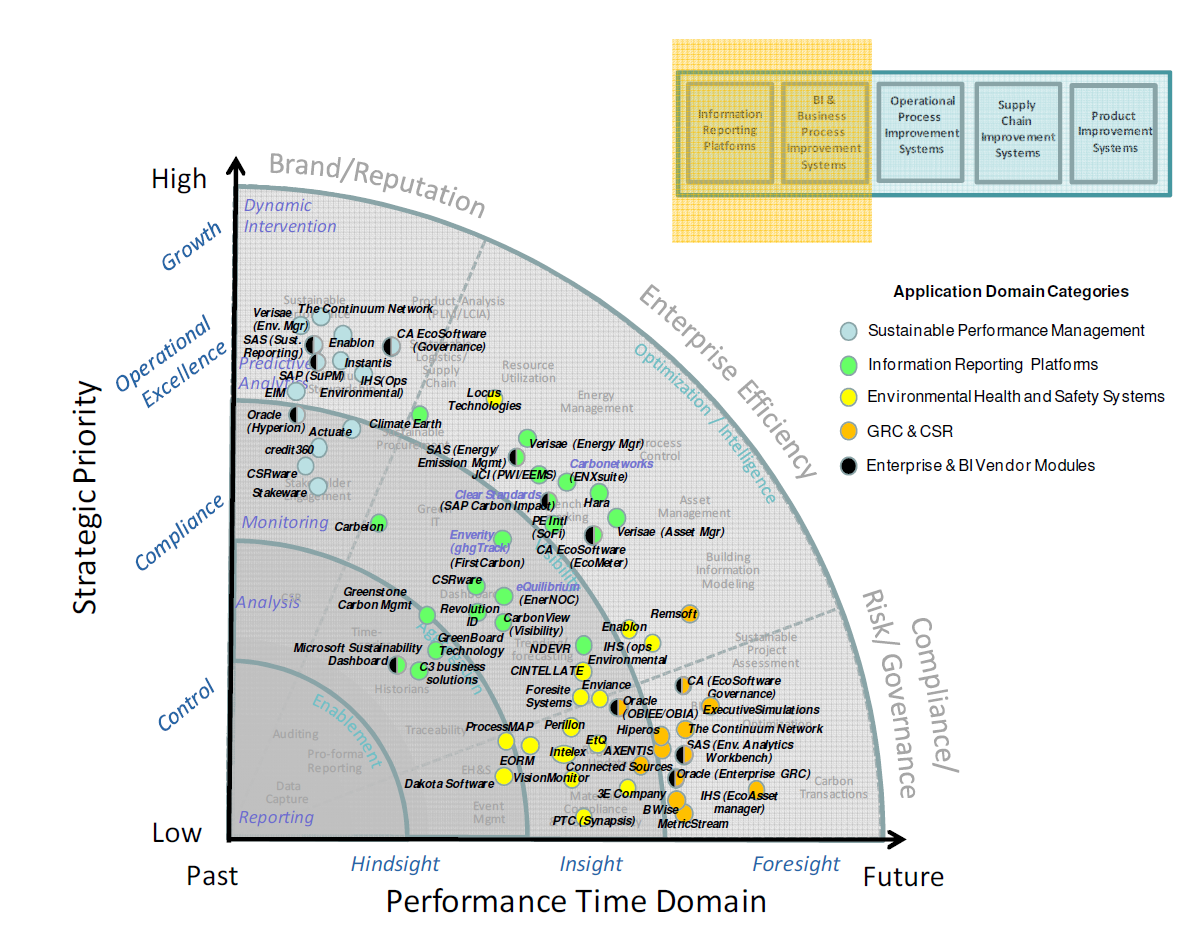
Gartner recognized the power of the Locus Platform in their early research.
This is the third post highlighting the evolution of Locus Technologies over the past 25 years. The first two can be found here and here. This series continues with Locus at 25 Years: How did we fund Locus?
To celebrate a milestone 25 years of success in EHS and ESG software development, we sat down with Locus President, Wes Hawthorne for a brief discussion. In this post, we ask him a series of questions highlighting the past, present and future of EHS and ESG.
One of the persistent challenges we’ve seen for the past 25 years is that the responsibilities of environmental professionals are continually expanding. Previously, almost all environmental work was localized, with facility-level permits for air, water, waste, etc. That has expanded over the years to include new regulations and reporting requirements for sustainability, social metrics, and other new compliance areas, while the old facility-level programs still continue. This has led to more pressure on environmental managers to keep up with these programs, and increased reliance on tools to manage that information. That’s where Locus has always focused our effort, to make that ever-expanding workload more manageable with modern solutions.
The current flood of interest in ESG is certainly notable as far as bringing corporate attention to the environmental field, as well as having requirements originate from the SEC here in the US. We have become accustomed to managing oversight from multiple regulatory bodies at the local, state, and federal level, but SEC would be a newcomer in our line of work. Their involvement will be accompanied by a range of new requirements that are common for the financial world, but would be unfamiliar to environmental staff.
Across other EHS fields, we are seeing increased demand for transparency in EHS functions. Overall, this is a positive move, as it brings more attention to EHS issues and develops a better EHS culture within organizations. But this also drives the need for better tools to make EHS information readily available across all levels of the organization.
As far as technologies, the ones most likely to have significant impact in the environmental field are ones that don’t require a significant capital investment. Although there are definitely some practical advantages to installing smart monitoring devices and other new technologies, procuring the funding for those purchases is often difficult for environmental professionals. Fortunately, there are still many technologies that have already been implemented successfully in other fields, but only need to be adapted for environmental purposes. Even simple changes like using web-based software in place of spreadsheets can have a huge impact on efficiency. And we haven’t yet seen the full impact of the proliferation of mobile devices on EHS functions. We are still working on new ways to take advantage of mobile devices for data collection, analysis, and communication purposes.
We’ve seen a number of innovation milestones in the past 25 years, and while we didn’t invent SaaS, we’ve been largely responsible for adapting it and perfecting it for environmental purposes. One of the major innovations we’ve integrated into our products include online GIS tools where users can easily visualize their environmental data on maps without expensive desktop software. Another one was our fully configurable software platform with built-in form, workflow, and report builders tailored for environmental purposes, which allows anyone to build and deploy environmental software applications that exactly match their needs. There have been many other innovations we’ve incorporated into our software, but these two stand out as the most impactful.
More and more, we are seeing all types of reporting being converted into pure data exchanges. Reports that used to include regulatory forms and text interpretations are being replaced with text or XML file submittals. This transition is being driven largely by availability of technology for EHS professionals to generate and read these files, but it is also promoted by regulatory agencies and other stakeholders receiving these reports. Stakeholders have less time to read volumes of interpretive text, and are becoming more skeptical of potential bias in how facts are presented in text. These are driving the need for more pure data exchanges, with increasing emphasis on quantifiable metrics. These types of reports are also more readily compared against regulatory or industry standards. For reporters, lengthy corporate reports with volumes of text and graphics are becoming less common, and the success of an organization’s programs will be increasingly reliant on robust data sets, since ultimately only the data will be reported.
There are actually a few that immediately come to mind. One reason is the nature of our continually evolving products. By providing our solutions as SaaS, our software adapts with new environmental requirements, and with new technologies. If our software was still the same as it was 25 years ago, it simply wouldn’t be sufficient for today’s requirements. Since our software is updated multiple times each year, it is difficult to notice the incremental changes, but they can be readily seen if you compare today’s software with the original in 1997. And we’re committed to continuing the development of our products as environmental needs change.
The other primary reason for our success is our excellent staff and the environmental expertise we bring to our customers. We simply could not provide the same level of support without our team of environmental engineers, scientists, geologists, chemists, and an array of others. Having that real-world understanding of environmental topics is how we’ve maintained customer relationships for multiple decades. And our software only has value because it is maintained and operated by staff who appreciate the complexity and importance of environmental work.
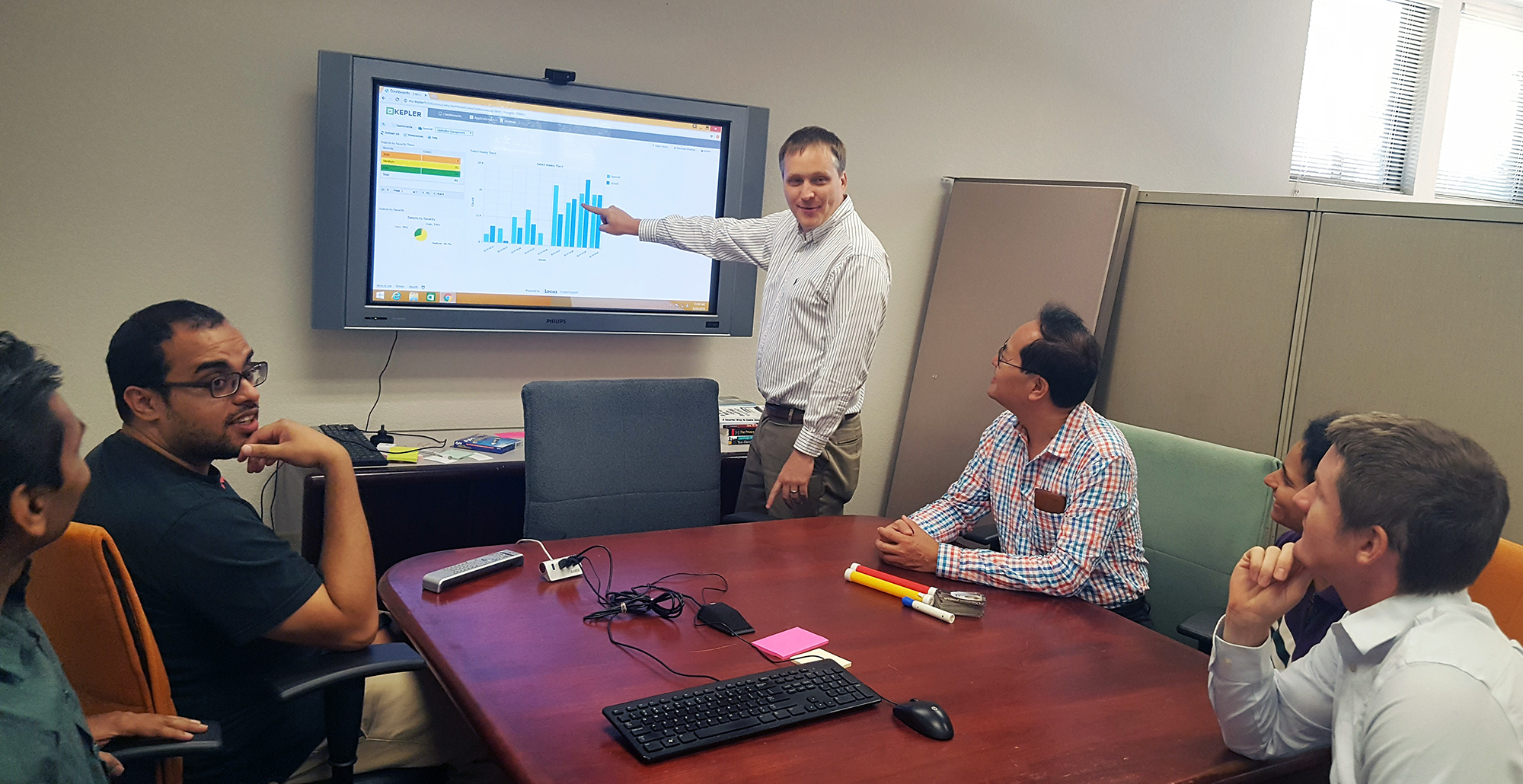 Mr. Hawthorne has been with Locus since 1999, working on development and implementation of services and solutions in the areas of environmental compliance, remediation, and sustainability. As President, he currently leads the overall product development and operations of the company. As a seasoned environmental and engineering executive, Hawthorne incorporates innovative analytical tools and methods to develop strategies for customers for portfolio analysis, project implementation, and management. His comprehensive knowledge of technical and environmental compliance best practices and laws enable him to create customized, cost-effective and customer-focused solutions for the specialized needs of each customer.
Mr. Hawthorne has been with Locus since 1999, working on development and implementation of services and solutions in the areas of environmental compliance, remediation, and sustainability. As President, he currently leads the overall product development and operations of the company. As a seasoned environmental and engineering executive, Hawthorne incorporates innovative analytical tools and methods to develop strategies for customers for portfolio analysis, project implementation, and management. His comprehensive knowledge of technical and environmental compliance best practices and laws enable him to create customized, cost-effective and customer-focused solutions for the specialized needs of each customer.
Mr. Hawthorne holds an M.S. in Environmental Engineering from Stanford University and B.S. degrees in Geology and Geological Engineering from Purdue University. He is registered both as a Professional Engineer and Professional Geologist, and is also accredited as Lead Verifier for the Greenhouse Gas Emissions and Low Carbon Fuel Standard programs by the California Air Resources Board.
299 Fairchild Drive
Mountain View, CA 94043
P: +1 (650) 960-1640
F: +1 (415) 360-5889
Locus Technologies provides cloud-based environmental software and mobile solutions for EHS, sustainability management, GHG reporting, water quality management, risk management, and analytical, geologic, and ecologic environmental data management.
